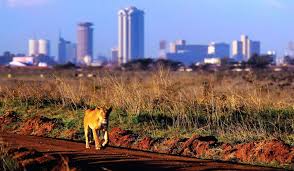The first national park to be formed in Kenya would appear to be under threat. Consisting of only 45 square miles, it is unique around the world as the wilderness comes deep into the city, allowing you to view many wild species with skyscrapers as a backdrop.

Wildlife populations have crashed in the last 70 or so years. In the past huge migrations would bring 30,000 wildebeest to visit each year, and animals such as zebra have had population falls of approaching 50% in just 9 years.
Unfortunately, the park now faces its greatest threat, which may well end its days as a significant wildlife resource.
In a park of this size, the ability for wildlife to roam in and out of the park is essential, As such the Kenyan governments plan to fence the park in is likely to be its death warrent.
While an area of this size can support herbivore populations that could be healthy for decades or even centuries, the same cannot be said for animals such as lions. The area supports 35 (an extremely large number for such a small area). However without the ability for wildlife to roam in and out, it is unlikely that this would continue.
Part of the problem is that migration corridors that were once owned by the government and kept for wildlife use, has been sold off. The new owners obviously use the land as they see fit, and these routes in and out of the park have gradually disappeared.
One can hope that this fascinating ecosystem will be saved, but without a change in decision by the Kenyan government it doesn’t seem hopeful.











